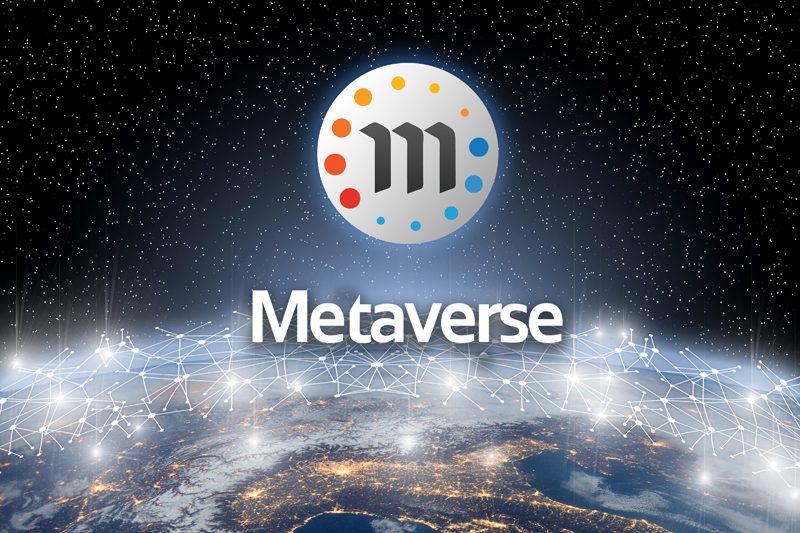Asset digitization has been a popular feature in the cryptocurrency industry. Its introduction has given both private individual and investors access to trade their assets in exchange for tokens. This key benefit has not only opened trade for digital asset owners but it has also helped to open gateways for trading across different currencies. The Metaverse cryptocurrency is a blockchain platform that uses its smart contract feature in the digitization and identification of physical assets. Metaverse looks forward to developing a system where users can create an identity on their asset through the use of avatars as an identification process. With this identity system, digital assets can be linked to assets owners.
Metaverse creation, idea, and its token
Metaverse was launched in 2016 by an Asian blockchain expert Eric Gu. He was partnered by Chen Hao who helped in the development of the programming language of Metaverse. It was designed to be a new reality where digital assets and digital identities build the framework of asset transactions with the help of a value intermediary like Oracle. Metaverse was created with the use of Ethereum smart contract to create digital assets from physical assets. These digital assets are known as smart properties that can be traded across its blockchain.
The Metaverse native token is known as Entropy, and it is abbreviated as ETP. Its maximum supply when released was 100 million ETP. In the distribution of its 100 million ETP, 25% was for its MVS foundation, 20% as rewards for ETP deposits, 25% for ICO investors, and 30% as a reward for mining.
Benefits of Metaverse Cryptocurrency
1. A store of value
The creation of Metaverse by Eric Gu was geared towards making the whole blockchain a store of value of digital assets. This entire blockchain system will ensure that assets are stored properly with the right valuation without devaluing it. In this way, digital assets cannot get lost easily. It will allow for duplicated forms of the assets to be generated, distributed, shared and stored in a secure system within the entire Metaverse blockchain.
2. Opportunities for trading assets
One hindrance of physical assets is its inability to be traded in different trading platforms. But with Metaverse smart contract, physical assets can be traded across multiple trading platforms in the form of digital assets. Users can convert their physical assets into Metaverse Smart Tokens (MST) which can be issued by an individual or substituted as collateral when performing trades. Also, in its trading gateways, users can trade its MST in exchange for other tokens within the Metaverse blockchain or across its chain to other tokens. By this way, trading opportunities are opened to physical assets holders in the form of digital assets.
3. A unique identification system for digital assets
The creation of digital identities for digital assets ensures that assets are truly owned by an individual. In this regard, Metaverse uses an avatar as a unique way of identifying digital assets. Its unique identification system will help to prevent leak and loss of data caused by hackers. It will reduce fraud cases, and limit the occurrence of incompatible identity data within the Metaverse blockchain.
4. A secured intermediary with the use of Oracle
Oracle in the Metaverse blockchain acts as an intermediary. The presence of Oracle removes the difficulty of Metaverse communicating with off-chain features. Oracle intermediaries are responsible for checking the credibility of off-chain data feeds to ascertain their reliability. This way, Oracle will be responsible for storing and issuing assets. It will also authenticate true ownership of avatar to digital assets, and provide proof for transaction across its blockchain.
5. Anonymity during trades
Blockchain generally gives users privacy rights when performing trades. This anonymity feature has seriously been debated that it can be an avenue for criminal activities like money laundering. With Metaverse’s anonymity feature, users can perform trades within its blockchain, access valued digital assets, share assets and perform cross-chain trades with a high level of anonymity.
6. A smart contract type
Ethereum smart contract acts as the standard blockchain- type in which the Metaverse blockchain is built. Its blockchain act as trusted digital intermediaries whenever trades occur within the blockchain. Users can implement smart contract features to create a level of trust, transparency between trading parties. Also with the use of its smart contract, physical assets can be converted into digital assets known as smart properties.
7. On-chain Exchange
Metaverse creates an on-chain exchange of assets within its blockchain. MST and ERP can be traded across its blockchain and recorded for reference purpose within its ledger system. Metaverse on-chain exchange occurs in real-time through a secure system of exchange. Users can, therefore, place trades between different fiat currencies and cryptocurrency within its blockchain.
8. A diverse wallet system for its users
Wallets are carriers of private and public keys which act as a safe haven for cryptocurrencies. In Metaverse’s official wallet system, users have open access to store their ERP, MST, and MIT in either mobile wallet, desktop wallet, and web wallet. Its wallet system has options either to create a new wallet, open wallet from QR-code, or open wallet from backup words. Apart from their official wallet, Metaverse also approves the use of wallets like BitGo and Cloudwallet for the storage of its token.
9. Dual-phase for its mining consensus
The mining of its token follows a dual-stage design. In the first stage, the deployment of Proof of Work mining consensus is used for its mining process. This first stage will use the GPU mining and ETHASH as the mining algorithm for Metaverse in order to secure the system. As Metaverse continues to grow and develop, stage two will be used to support higher transactional output in Metaverse. In its second stage, the Delegated Proof of Stake (DPoS) algorithm will be implemented from graphene to increase its security system. This implementation process of DPoS is to cater to the flaws from PoW such as its inability to avoid interference from attackers in the voting process.




